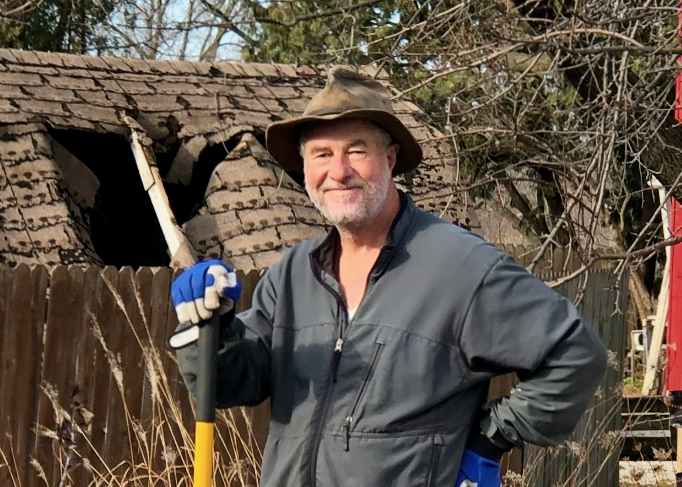By Dan Russler
Long after most U.S. states had published energy plans, Wisconsin delayed. Finally, version 1 of the Wisconsin Energy Plan (WEP) was published this spring, but Jefferson County media have discussed neither the plan itself nor the implications for Jefferson County.
We are in the midst of multiple energy crises: natural gas, gasoline and fertilizer have been rocketing higher in price; heat waves this summer are raising the specter of emergency electricity constraints, even in the Midwest. And although Wisconsin has only progressed to version 1 of its energy plan, it’s time Jefferson County begins to take ownership of energy issues in order to avoid going “Off the Rails” later on.
A key fact to consider is how much money both Wisconsin and Jefferson County are sending out-of-state and out of our local economy in order to purchase energy. In Wisconsin, according to the WEP, we send $14-plus billion out-of-state to pay for coal and refined petroleum-based energy. Another two-plus billion Wisconsin dollars were spent on petroleum-based fertilizer, as estimated from state fertilizer tonnage reports, and fertilizer is an energy-intensive product that we need for Jefferson County farmers. Jefferson County should also track spending on energy in order to develop future return-on-investment estimates.
At the same time, electricity costs to both our businesses and residences have been higher than the Midwest average since 2010, according to the Wisconsin Public Service Commission. Sending this much hard-earned money out-of-state is a waste and hard on our economy, both for the state and for Jefferson County.
As a rural county, Jefferson County could be considering two major local energy strategies in order to decrease this flow of money out of our economy. The first is called “Community Solar” and the second is a kind of solar production called “Agrivoltaics.” In order to implement these two strategies for maximum benefit, Jefferson County needs to use Jefferson County businesses to develop the permitting expertise and the fabrication expertise to install them. Fortunately, Jefferson County is known for its native fabrication talent and also has a few native solar businesses that can be encouraged to grow. These businesses will need additional support from Jefferson County leadership at the county, city, village and town levels, as well as within the educational system.
For Community Solar, think of the towns surrounding cities, like the town of Jefferson, that could be selling low-cost electricity to Jefferson Utilities in the city of Jefferson, with electricity purchases of over $7 million per year. For Agrivoltaic Solar, think of farmers who create solar structures high above sheep and cattle pastures and produce crops. These farmers could then use solar energy, not only for fertilizer production, charging electric tractors and running other equipment, but they could also increase their income by selling excess electricity to Jefferson Utilities. All the while, they continue farming the land under the solar panels.
Next, leadership will need a better understanding of what solar energy can be used for in Jefferson County. The list includes local fertilizer production from solar ammonia, money-saving heat-pump applications for residences and industry, gasoline and diesel fuel replacement by electric engines, and, of course, the traditional, daytime electricity used by cities in Jefferson County with their own utility systems. With the current Wisconsin retail on-peak (sun shining) electric rate of about 20 cents per kWh (as charged by WE Energies), the three-cent wholesale price of local solar energy anticipated for 2030 (now about 5 cents) looks like a very good opportunity for our Jefferson County economy. However, it would be wise to begin building up the ability to consume this electricity during the day before installing large amounts of solar energy production.
Our Jefferson County Energy Plan should contain support for modernization efforts by multiple groups in Jefferson County. These include our farmers’ migration to new agritech, our manufacturers’ upgrades to more efficient and capable energy use, our small business and supply chain upgrades, and our residential use and commuter transportation upgrades. At the same time, we need to markedly decrease the energy imported from out-of-state and recapture this money for our local economy.
Describing himself as a writer of “commentary by a nonpartisan centrist,” Dan Russler is member of two ad hoc analytical groups: Fair Maps of Jefferson County and the Wisconsin Map Assessment Project (WIMAP), and he is one of 36 “Concerned Voters of Wisconsin,” a citizens’ group which submitted in January an amicus brief, also known as a “friends of the court” document, asking the Wisconsin Supreme Court to reject the Wisconsin Legislature’s proposed Assembly map. He is one of 10 Wisconsin voters who, in March, filed a civil rights lawsuit asking the federal court for a declaratory judgement disqualifying U.S. Sen. Ron Johnson, and U.S. Reps. Scott Fitzgerald and Tom Tiffany as candidates for office in November. Russler is a resident of Jefferson County.

Dan Russler
This post has already been read 1594 times!

I’d be interested in a conversation.
Glad to start. Have a question or comment?
I’m the former Jefferson County Board Chair and Current Alder at the City of Jefferson. There’s a lot to unpack from what you’ve presented, and since you reference both county and city government, I’d be interested in an initial phone conversation re what you see as actionable first steps. Nine 2 zero, seven 2 eight, two one 8 two.